It’s incredible to imagine, but some small countries in all corners of the globe used to be capitals of mighty empires that controlled continents or swaths of land. There are a lot of remnants of empires that once ruled the world. Italy, for example, was once the center of the Roman Empire. But there are plenty of small countries that used to be much bigger – take México, which used to control almost all of North America.
Our modern world was shaped by conflict, wheeling and dealing, and military conquest. Amazingly, some of the largest and most powerful imperial states to emerge grew out of very small countries. Whether for greed, economic survival, or security, these various cultures launched themselves into the annals of history by quickly building vast empires. What do old empires look like now? If you read on, you might be surprised what small countries used to be empires.
Tiny England Once Controlled A Quarter Of The Earth
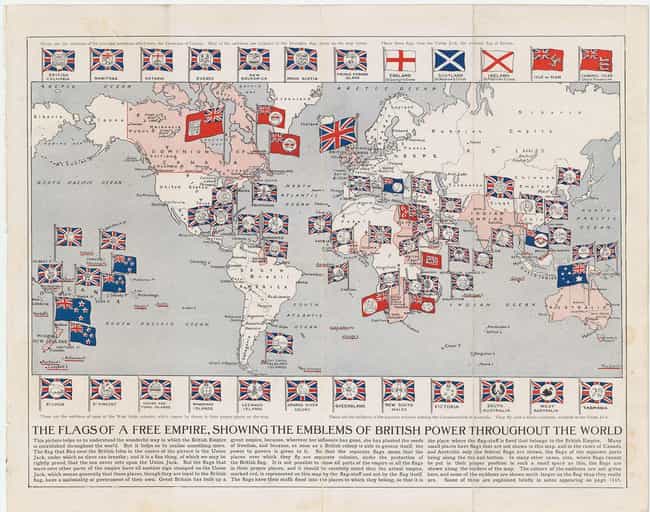
The British Empire is one of the more well-known, but what makes it so interesting is how long it was able to stay in power. Like the Roman Empire, the Spanish Empire, and others, the British Empire was able to hold on to power and territory by using the vast power of its colonies to put down rebellions and fight wars.
Beginning in the 15th century during the reign of Henry VII, the English began the process of modernizing their navy for long-distance trade. Under Richard III, Henry VIII, and Elizabeth I, the navy was built up and the first overseas colony was established at Newfoundland by [Italian Venetian navigator Giovanni Caboto, sailing under the name of] John Cabot. Once Sir Francis Drake defeated the Spanish Armada and prevented the invasion of England, Britain found herself the power of the seas and able to continue expanding and trading. By the 17th and 18th centuries, England had been setting up colonies in New England, Ireland, Scotland, and then India, the crown jewel of the newly founded British empire.
England would have never been able to expand and take control of foreign land without the establishment of the British East India Company and the use of state-sponsored privateering. As the East India Company became wealthier, it established the Presidency Army. Unique for its time, the army of the East India Company became the largest privately owned fighting force in the world, and it quickly outgrew the professional English territorial army of the home country.
By the 19th century, the East India Company’s army was becoming too powerful to control, and Queen Victoria, with the help of Parliament, stepped in to reorganize the army after the horrible Indian Mutiny of the 1850s. The Presidency Army became the Army of British India. The British Empire faced the early stages of dissolution during the outbreak of WWI. In 1916, the Easter Uprising in Ireland demonstrated the dissatisfaction of the Irish towards being ruled by the English. The Great War severely weakened the empire and laid the foundations for WWII. In 1945, with the defeat of Nazi Germany, Fascist Italy, and Imperial Japan, Great Britain began to experience numerous nationalist and liberal movements in India, the South Pacific, Africa, and Palestine.
After decades of slow dismantlement, Hong Kong was declared to be a special administrative region of the People’s Republic of China. With this simple transfer of power, the last British overseas territory became part of another country and effectively ended the British Empire. The breakup of the British Empire resulted in the birth of over a dozen independent nations in Asia, Africa, South America, Oceania, the Middle East, within the British Isles, and in North America.
The Ottoman Empire Became Turkey
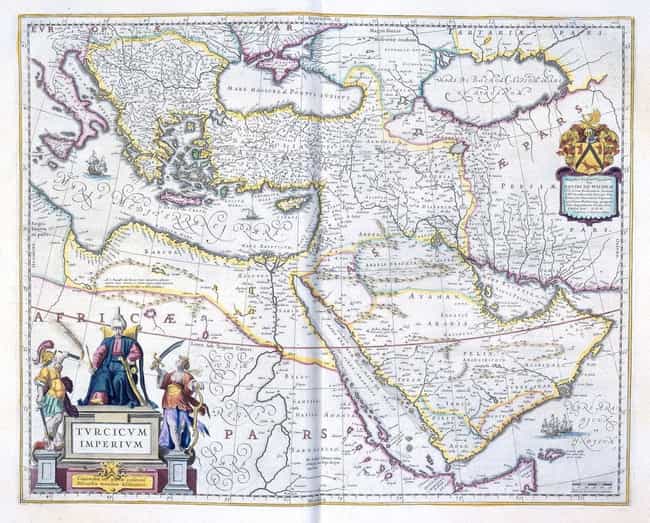
The Ottoman Empire, named after the individual tribe of Turkic peoples who began the dynasty, has an extremely unique history. It was a state that began with the demise of an ancient empire and lasted into the 20th century.
During the 700s and 800s CE, various groups of Turkic people indigenous to the Asian steppes were uprooted with the arrival of Mongol forces from the east. One specific Turkic clan, the Ottomans, formed in Anatolia (in modern Turkey) under the leadership of Sultan Osman Gazi and adopted Islam. After consolidating power, he expanded Ottoman-Turkic territory into the lands of the dying Byzantine Empire.
Just decades before the beginning of the First Christian Crusade, the fledgling Ottoman Empire began growing and reaching further into surrounding territories. Using the landmass that would become modern Turkey, the Ottomans came into control of what is essentially a bridge between Europe and Asia. Through Turkey, trade and military forces could travel between regions.
With the help of their mercenaries, namely the Christian Janissaries [yeñiçeri meaning “new soldier”], the Ottomans defeated European armies from several kingdoms from the 10th century until their forces stood at the gates of Constantinople. The city, which was the last bastion of the Eastern Roman Empire, fell to the Ottomans in 1453 and ushered in a new age in Europe.
Through the centuries, the Ottomans weathered various threats, both internal and external, until WWI erupted in 1914. By this time, the Ottoman Empire was known as the sick man of Europe and showed clear signs of fracturing.
By 1918, engagements between the Ottoman Empire and its British and French opponents came to an end in an armistice. Within the empire the Young Turks, a revolutionary group led by Enver Pasha, fought for control against the Sultan Mehmed VI, the ruler of the empire. This clash led to an interim Ottoman government that consistently lost control of former lands of the Empire. Then, in 1920, Turkish nationalists convened in Ankara and elected their first president, Mustafa Kemal (Kemal Ataturk). This simple act ignited a vicious but brief civil war amid the chaos of the breakup of the empire and the land grab by the British and French.
Finally, the Turkish National Assembly dissolved the centuries-old Sultanate that culminated in Mehmed VI stepping down from his throne in 1922. In 1923, Mustafa Kemal was recognized as the new, first president of the Turkish Republic. Sadly, most of the Middle Eastern lands formerly under control of the Ottoman Empire were not granted freedom but were absorbed into the British Empire or came under French control.
Austria Used To Be The Austro-Hungarian Empire
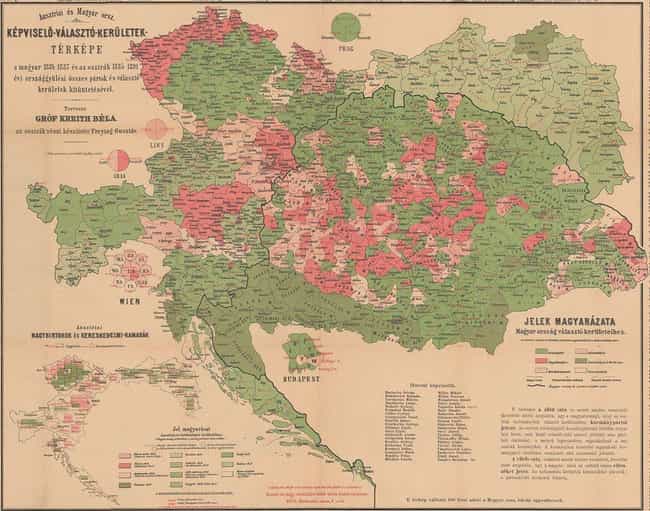
As many as 11 individual ethnic groups lived under the rule of the Austro-Hungarian Empire. Underneath the veneer of regal pomp and circumstance, this diversity was becoming increasingly difficult for the House of Hapsburg to control.
The 1867 compromise between Austria and Hungary was one result of the Prussian victory in the Seven Weeks War the previous year. With Austria defeated, the Kingdom of Hungary was in a stronger position to request greater autonomy and stay within the Austrian Empire. The Austrians recognized this and the Austro-Hungarian Empire was born. This agreement benefited both monarchies and offered greater mutual economic and military security protection against external threats.
When Archduke Franz Ferdinand was assassinated by Gavrilo Princip in 1914, Emperor Franz Joseph declared war on Serbia and WWI quickly escalated into a global conflict. Only two years later, the Emperor passed and was replaced with Charles I. This vacuum and transition of power left the Hapsburg Empire in a terribly dangerous position. The many ethnic groups living within the imperial borders felt strong connections to other countries and wanted emancipation from rule. The Czechoslovak Legion was a fighting force made up mostly of Czechs and some Slovaks. Each group supported breaking away from the Austro-Hungarian Empire and establishing new nations. To help accomplish this, they fought on behalf of the Imperial Russian Army.
In 1918, the fighting ended and left the wreckage of the Imperial Russian Empire. The German Empire was crumbling, France had fought to exhaustion, Great Britain was weakened, the Ottoman Empire would soon disintegrate, and now the sun was setting on the Austro-Hungarian Empire. After only 51 years, several groups took advantage of the chaos at the end of the fighting to break away and form new nations. Moravia, Ruthenia, Silesia, Bohemia, and Slovakia formed the Republic of Czechoslovakia, while Yugoslavia was born and made up of Bosnia, Croatia-Slavonia, Herzegovina, and the Dalmatian coast. The German-speaking areas of the old Empire became modern Austria, while Poland acquired Galicia and the remaining lands became modern Hungary. In less than a generation, these nations would be thrown into the abyss of WWII and maps of Central and Eastern Europe would change again in 1945.
The Great Mongol Empire Of Asia And Europe Became Mongolia
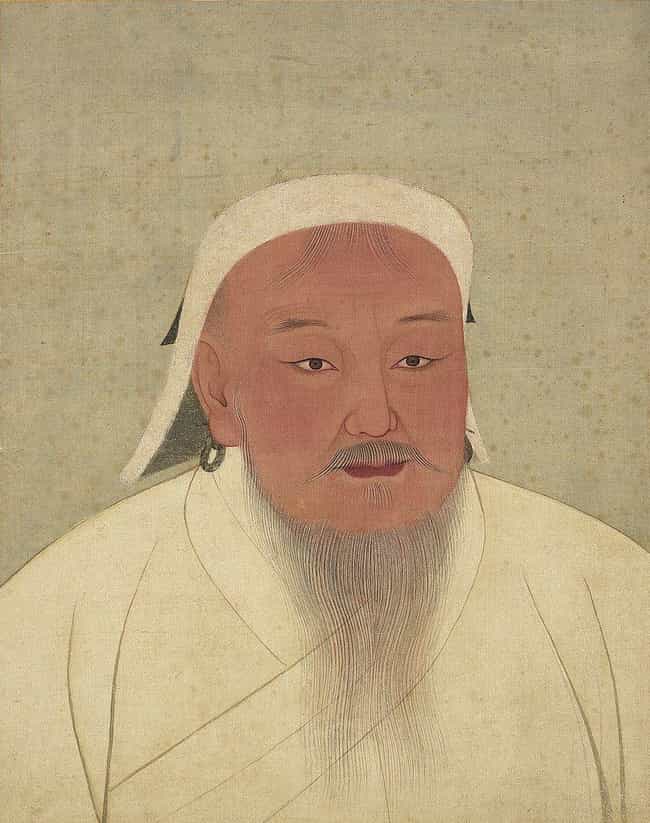
For centuries, the reputation of the Mongols and their empire sent chills down the spines of the cultures who were affected by the wrath of the Khans.
In the 12th century CE, Genghis Khan was born in the mountains of northern Mongolia near the modern border with Siberia. Legend has it, he supposedly emerged from the womb clutching a clot of blood. Born with the name Timujin (or Temujin), he would later prove himself worthy of his more well-known nom du guerre Genghis Khan, which means “Universal Ruler.” By 1207, Khan united the warring clans of Mongolia with force and sword one at a time and created a strong chiefdom with a powerful cavalry to solidify power. His rule spread from parts of modern-day Europe [to far east] Asia.
Khan’s grandson Kublai Khan went on to conquer all of what is now China by the 13th century. It was also around this time he met Marco Polo of Italy. Twenty years later, the elder Khan passed and fractures in the empire began to expand. Several monarchs who paid heavy taxes for protection money began building up armies and defying Mongol law. In West Asia, a Muslim named Timur (also known as Tamerlane) began conquering territory and helping bring Islam to lands formerly under control of the Mongols. Additionally, the Russians mounted a rebellion against the Mongols in what is now Ukraine, and the Ming Dynasty in China began to rebuild its own empire and strengthen its military. It soon became clear the Mongol Empire was too big to defend and various cultures broke away when the Mongols were busy with other insurrections.
At its height, the Mongol’s empire and influence stretched from the Korean peninsula all the way to eastern Poland [and Hungary] in the west and from the Siberian border in the north down to as far south as Vietnam. To this day, it remains the largest contiguous empire in human history. When the Empire fell, the Kievan Rus began building their own nation of Russia. The Ming Dynasty began crossing oceans and establishing trade routes, and the empire shrunk over the years to become modern Mongolia.
The Holy Roman Empire Broke Up Into Several Modern Countries
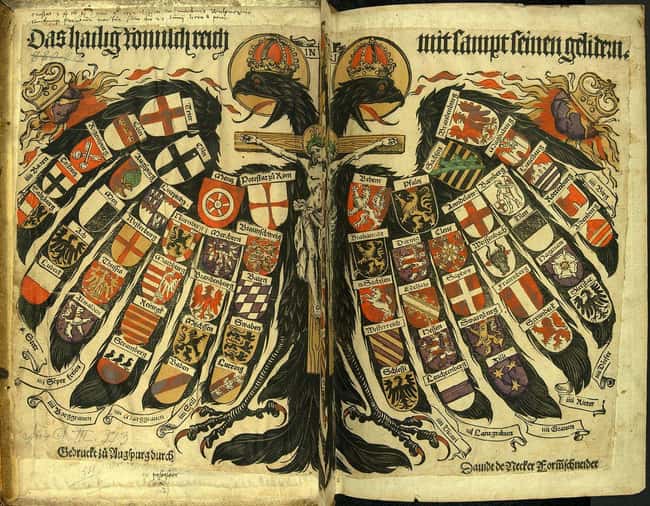
Four centuries after the fall of the Western Roman Empire, Charlemagne was crowned by the Pope as Holy Roman Emperor. The year was 800 CE, and the Dark Ages were in full swing. Maintaining control over Europe remained difficult after Charlemagne’s passing and his Kingdom of the Franks was divided. In 962, Otto I was proclaimed Holy Roman Emperor and he began restoring the empire’s prestige.
Through the centuries and by the efforts of successive emperors, the Holy Roman Empire controlled what is now Germany, Italy, northern Poland, eastern France and modern day Belgium, and Luxembourg. At the time, different regions and kingdoms had local subordinate leaders who paid homage to the reigning Holy Roman Emperor. The empire would miraculously survive a series of threats, including the Protestant Reformation and the Thirty Years War, despite never being a fully unified state itself.
The beginning of the end of the HRE started in the last years of the 18th century. The catalyst was the French Revolution, the execution of King Louis XVI, and the rise of the Jacobins. The combined upheaval and the growing power of a unified France under Napoleon Bonaparte terrified monarchs across the continent.
Being a tactful politician as well as a brilliant and bold military commander, Napoleon divvied up the captured German lands among the local nobles to reduce the military threat from the larger German states and satisfy those who had lost land in an attempt to prevent them from also taking up arms against him. Meanwhile, Austria was not content with the outcome and marched against Napoleon one last time in a coalition with Prussia and Russia. Napoleon soundly defeated Austria, Prussia, and Russia at Austerlitz and captured the city of Berlin. Later in 1806, Leopold abdicated as emperor and the Holy Roman Empire became 16 German states of the Rhine Confederacy after a millennium of imperial rule.
The Achaemenid Empire Wielded Immense Power And Eventually Became Modern-Day Iran
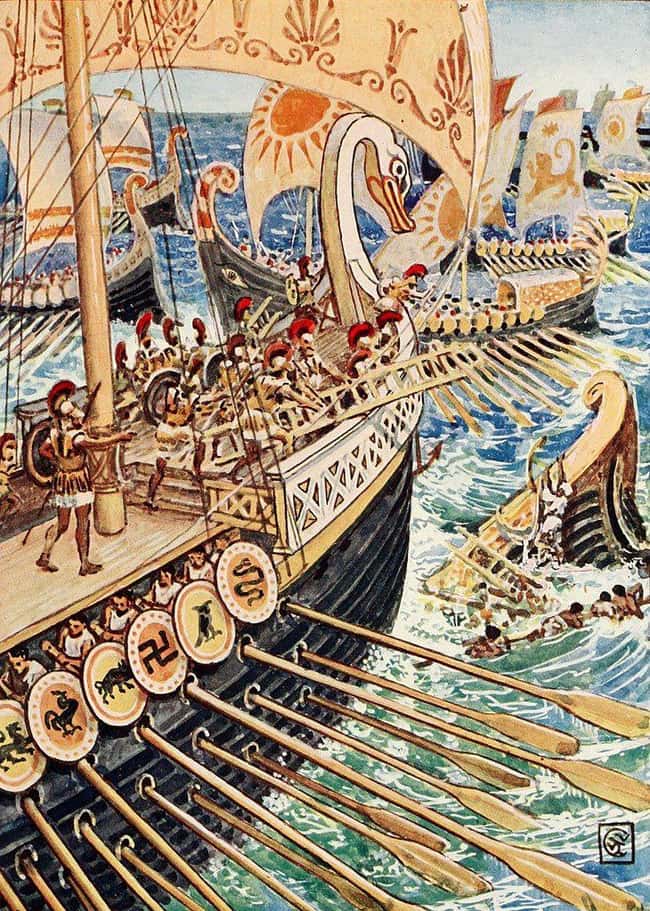
The mighty Persian Achaemenid Empire used to rule parts of Europe, Asia, and Africa, and it is now modern-day Iran. The true history of the Persian Achaemenid Empire is extremely complex. It started after nomadic Persians moved into Iran during the sixth century BCE.
Beginning around 550 BCE, Cyrus the Great had just defeated his northern rival, King Astyages of Media [who was actually his own grandfather]. Following the fighting, the Egyptians, the Babylonians, and the Lydians were allied and saw an opportunity to pounce on the territory left open. Cyrus recognized the threat and while the Lydians were encamped for the winter, he pursued them and captured their capital of Sardis [Sart, Manisa Province, western Turkey] in 539. Soon after, Cyrus’s forces defeated the Babylonians. Upon taking control, he treated the subjects with respect, even freeing dissidents and acknowledging the rights of religious minorities. These two acts gained him favor and support. In the year 525, Cambyses, son of Cyrus, attacked the Egyptians in the Nile Delta, and after 10 days, he captured the old capitol of Memphis. On his journey back to Persia, Cambyses perished and [Cyrus] was soon succeeded by Darius I.
Over the decades, the Achaemenid Empire was ruled by Darius I, his son, Xerxes, and several emperors each taking the names of their forebears until Darius III ascended the throne. He was soon assassinated by one of his own army generals. Once Darius III was gone, Alexander the Great took control of the Achaemenid Empire and began to make it his own. This effectively ended the history of the Achaemenid Dynasty after 200 years of ruling the region. The areas formerly under its control are now the northern Arabian Peninsula, Israel, Lebanon, Jordan, part of Turkey, northern Greece, Crimea, the Caucasus, Egypt, and Iran.
The Spanish Colonial Empire Stretched Across The World, But Now Occupies Spain
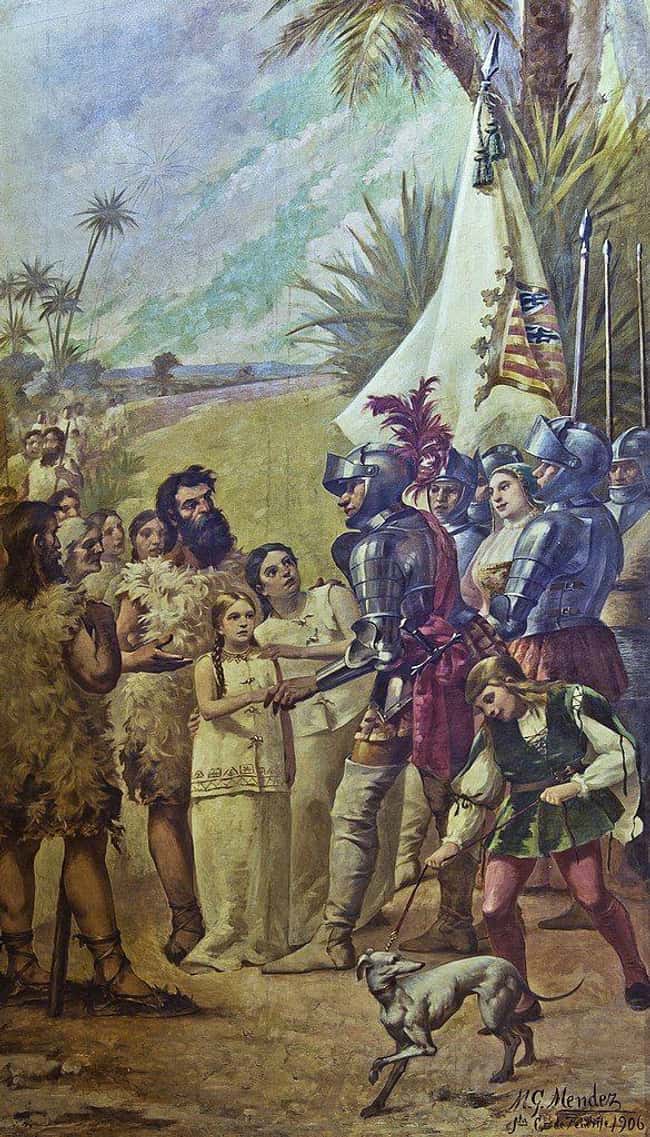
The Spanish empire was one of the most rapacious nations in history. In 1492, the armies of Ferdinand and Isabella stamped out the last independent Moorish king in the Andalucía city of Granada. Once the Iberian peninsula, with the exception of Portugal, was firmly in Castilian control, the king and queen financed the trade expedition of Christopher Columbus [yet another Italian merchantman, Cristoforo Colombo, from Genova]. Upon arriving in the Caribbean and “discovering” the new world, Columbus persecuted the indigenous Taino people.
Initially, the colonization efforts followed a milder pattern with both Ferdinand and Isabella in control, but once Isabella passed, Ferdinand employed harsher tactics in trade and exploration. In Europe as well as the Americas, Spain began fighting for land and influence in Italy and the Netherlands and even attempted an invasion of England during the reign of Elizabeth I. While this was financially beneficial it came at the price of uninterrupted economic and militaristic confrontation with other colonial powers of the day.
The height of the Spanish empire saw a firm grip on colonial possessions in Italy, North Africa, the Philippines, and the Americas. The territory held or controlled by Spain in the western hemisphere reached as far north as the Canadian border and as far south as the southern tip of Argentina. As with all successful empires, Spain relied on local client rulers to run day-to-day affairs of their homelands, but after a while, the empire became too big for tiny Spain to control and after the War of Spanish Succession, Spain’s power began to diminish with the loss of European and North African holdings.
Meanwhile, on the other side of the Atlantic, the colonies of the Caribbean, México, the Californias, Central America, and South America remained under Spain’s control until Napoleon’s invasion of Spain. Known as the Peninsular War, the conflict gave colonies in Central and South America the perfect opportunity to stage revolts and break away from Spanish control. In 1898, with the outbreak of the Spanish-American War, the dying Spanish empire was dealt a deathblow when Admiral Dewey sank the Spanish fleet in Manila while Colonel Theodore Roosevelt and the US army captured San Juan in Cuba. Spain continued to maintain small holdings in Morocco, a portion of the Sahara, and the Canary Islands. The once great empire of Spain that spanned the globe was slowly reduced to become modern-day Spain.
The Songhai Empire – Now Known As Mali – Ruled West Africa
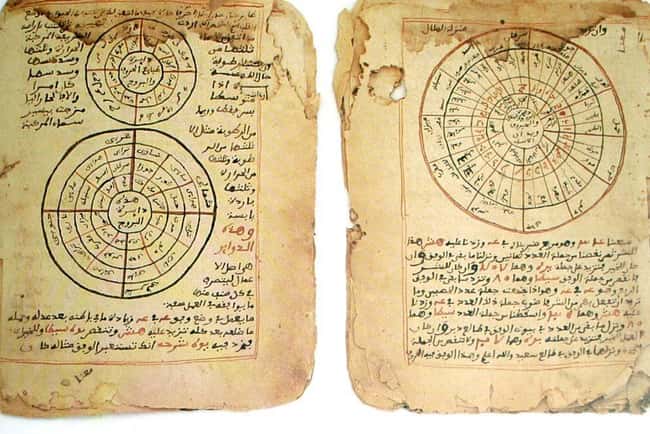
The great kingdoms and empires of Africa are overlooked in history books. While there are many, the largest Empire was the Songhai (sometimes spelled Songhay) Empire of West Africa. Songhai’s earliest cultural foundations can be traced to ninth-century fishermen who navigated along the Niger River in what is now the Republic of Mali. Contributing to the power and wealth of Songhai were the Muslim traders of the nearby city of Gao [in the Gao Empire]. The multicultural empire enjoyed power over territory reaching into the Sahara desert and stretching west to the coast with access to the Atlantic Ocean. In the east, the empire expanded as far as the Savannah and held sections of the large Niger River.
By the 15th century, Emperor Askia Muhammad Toure had established relations with Middle Eastern nations and traded not just goods but also knowledge. Unfortunately, prosperity ended for the empire in 1591 when a civil war erupted. Moroccan Sultan Ahmed Saadi took advantage of the instability and sent soldiers south to conquer Songhai. After defeating the larger Songhai army, the Moors withdrew once it was clear they could not hold on to cities like Gao and Timbuktu without stable trade routes in the Sahara.
Over the centuries after the civil war, emperors reigned over Songhai but the Empire was never fully restored. The remnants of the early empire did allow for the birth of the Bambara Empire, but then after centuries of holding on, the French army invaded Songhai’s territory in 1901, which effectively ended Songhai’s sovereignty.
The Inca Empire Stretched From Northern Ecuador To Chile And Northwestern Argentina And Is Now Perú
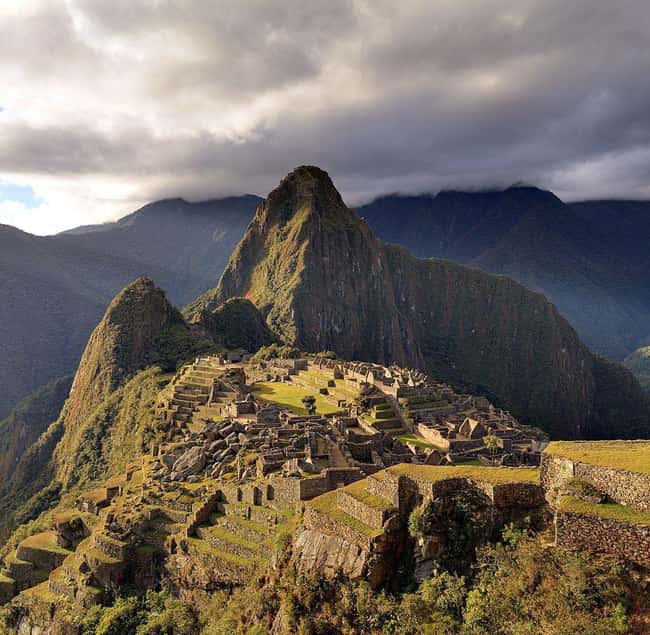
Tawantinsuyu emerged in the 1100s as the military power of South America. The kingdom of the Inca Empire ruled territory along the western coast of the South American continent, ranging from Ecuador to Chile. Under their fourth ruler, Mayta Capac, the territory of the Inca began growing out from their indigenous Perú into the surrounding areas.
Incas expanded their kingdom through military force, and eventually, ruled over a multi-ethnic population of more than 12 million people. Taking further measures to solidify their power, the Inca knew communication and food would maintain peace among them and built roads and sophisticated agricultural systems to feed their population.
Sadly their magnificent culture would soon be threatened with the arrival of Francisco Pizzaro and the Spanish Conquistadores during the 16th century. While the Spanish were a significant threat, it is now more clearly understood the Spanish relied on indigenous allied soldiers to fight for them. Without this advantage and the devastating effect of foreign European illnesses, the Spanish would have had a far more difficult time conquering the Inca as well as the Aztecs and the Mayans.
After a while, their line of emperors became puppet rulers to the Spanish crown. The empire continued to resist the Spanish until 1572, when the stronghold of Vilcabamba was overrun. Unfortunately, the Inca didn’t use a written language and much of what is known about the Inca Empire comes from European or other Mesoamerican sources. After the Spanish Empire agreed to the Treaty of Utrecht in the 18th century, its influence began to shrink and the modern countries of Ecuador, Chile, Bolivia, and Perú emerged and developed into the countries they are today.
The Dutch Colonial Empire Spanned Four Quarters Of The Earth And Is Now The Netherlands
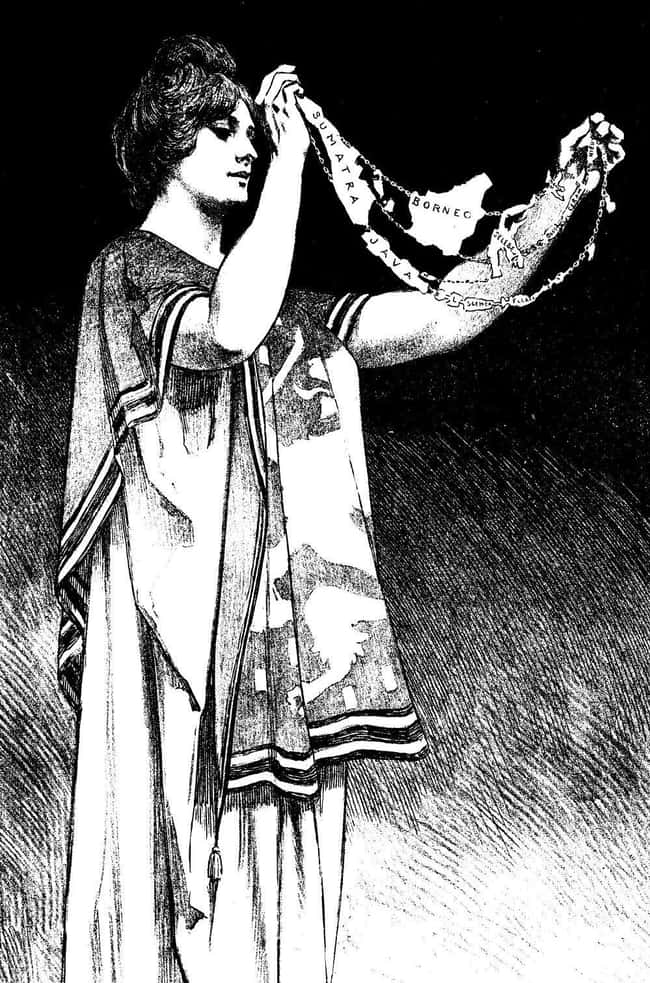
During the 1600s, the Dutch East India Company, the VOC, was established to rival the Spanish Empire and the British East India Company in the global race for economic dominance. Beginning in 1602, the company sailed from the Netherlands and began establishing trading posts in India and along the coast of East Asia. This steadily grew to include the Cape Colony of Africa and the East Indies where the Portuguese had already made a cultural impact years earlier.
Over the 17th and 18th centuries, the Dutch developed their empire. Instead of conquering large areas, the Dutch took a more quality-over-quantity approach to establishing colonies. At its greatest extent, the Dutch Empire enjoyed colonies and trade centers on almost every continent, including the continental United States. These areas included possessions in Asia, Africa, India, the South Pacific, the Caribbean, the Middle East, and North America. Though expansive, the colonies and trading posts were not enormous, which may have been a deliberate choice on behalf of the Dutch. A small country like the Netherlands would likely have difficulty controlling large, distant areas of the world when the fastest form of travel at the time was by ship.
The Dutch Colonial Empire lasted for over 300 years possibly due to careful administration and not over-stretching resources. While the empire did avoid the same level of conquest as its other European rivals, there was a strange brand of racism unique to the Dutch colonial administrators.
The end of the empire was brought about by WWII. After the fighting, a gradual decolonization process began and saw several insurrections in the 20th century. A colony would revolt, the rebellion would be put down, and measures to give greater autonomy and representation would be implemented. It was not until the 1970s that the Netherlands ceded authority to the newly independent country of Suriname. The slow process of shrinking the empire gave way to the birth of nations around the world and the Dutch Empire reverted back to its pre-imperial size and location of the Netherlands.
The First Mexican Empire Controlled Territory From Oregon To Costa Rica
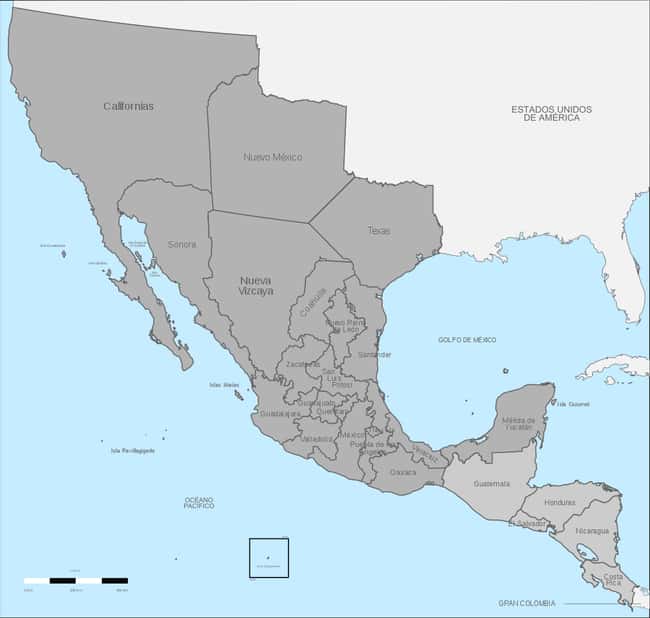
The First Mexican Empire was short-lived but huge in terms of territory compared with the other nations of the Americas in the early 19th century. Once a colony of Spain and known as Nueva España, México took advantage of Napoleon’s Peninsular War against Spain and broke away from the monarchy. Coming along with México were the southwestern American territories that would become Oregon, California, Arizona, New Mexico, Texas, Nevada, and Utah. South of México, the area would become Belize, Guatemala, Honduras, El Salvador, Nicaragua and Costa Rica.
The Army of the Three Guarantees, led by General Iturbide, entered México City and independence from Spain was won. It was September 1821 and General Iturbide was declared Emperor Augustín I of the Mexican Empire. Initially, there was pushback from elements of Mexican society to establish a republic that was to be governed by congress with a legislative process, but soldiers who were loyal to General Iturbide practically demanded he accept proclamation as emperor.
Fractures began to appear in the new nation. The war for independence and rebuilding of the country cost México a fortune and the destruction of from fighting had ruined the important silver mines that México relied on. Emperor Iturbide may have been a great military leader, but he was a reckless and inexperienced politician who bent to temptation of filling his pockets and placing friends in high places. When the public began to criticize him, he made the decision to dissolve congress.
One of the figures and minor leaders of the Mexican War of Independence was General Antonio López de Santa Ana. In 1822, he led his forces against the last remaining Spanish army fortress and held them at bay. That same year, he proclaimed the area of Veracruz as a republic while other army Generals followed suit. Upon first hearing this, Emperor Iturbide tried to rally loyal General José A. Echevarría to move against Santa Ana and put down the rebellion. Echevarría, however, was no longer loyal to Iturbide and the end was clear as day. With nowhere to turn, Iturbide abdicated and fled to Italy. With his departure, the gargantuan First Mexican Empire came to an end and was replaced first with a provisional government and then the Mexican Republic. Through the rest of the century, the territory of México would change by war, revolution, and upheaval. Eventually, the territory shrunk with the United States, gaining the western areas of North America while the Captaincy of Guatemala broke up into Belize, Honduras, El Salvador, Nicaragua, and Costa Rica as they are today.
The Umayyad Empire Reached From Portugal To Western India
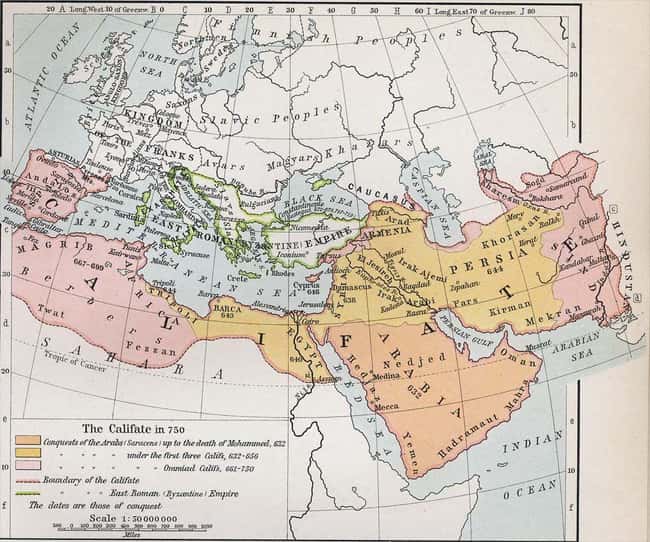
After the passing of the Prophet Muhammad, Islam was successfully brought throughout the Middle East and North Africa. In the same way that Christianity became the official religion of the Roman Empire, Islam was instituted in the the Umayyad Caliphate in 661 CE.
The Umayyad Caliphate was named after the clan that founded it and quickly overran the Middle East and North Africa. It gained control over more connected territory than the Roman Empire. In West Asia, the Caliphate’s easternmost border was nestled up against the Indian subcontinent and included modern Iran and Afghanistan. Further west were the Caucasus and what would become Armenia. Moving south, the empire encompassed the entire Arabian peninsula and stretched west to the Israeli shores of the Mediterranean Sea and the eastern half of what is now Turkey. The empire expanded further into North Africa to take hold of Egypt, Libya, Tunisia, Algeria, and Morocco, only stopping at the Atlantic Ocean. In Europe, the Caliphate’s border stopped as far as southern France and Basque territory while holding most of the Iberian Peninsula.
The Caliphate reached its greatest extent under the reign of Abd al-Malik when his armies pushed into Indian territory and moved north from Spain into France. Malik passed in 705 CE and the Caliphate began to experience debilitating defeats. First, in 717, Byzantine emperor Leo III led his Syrian army against the Caliphate and delivered a defeat and rout while the Caliphate’s eastern borders in the Middle East were being harassed by more Syrian forces. This, combined with a disrupted economy due to social change, sounded the death knell for the first Caliphate. Finally, in 732, the Caliphate’s armies were stopped by Charles Martel at Tours in southern France.
The end of the first Umayyad Caliphate was marked by the ascension of Marwan II who took the throne in 744 and only ruled for 6 years. With the breakdown of the empire and centuries of maps being drawn and redrawn, one can look at a modern map and see that the states that were once part of the Umayyad Caliphate are now parts of: southern France, Spain, Portugal, Morocco, Algeria, Tunisia, Libya, Egypt, Israel, Lebanon, Syria, Turkey, Jordan, Iraq, Saudi Arabia, Oman, Yemen, Iran, Afghanistan, and Pakistan.
–
(For the source of this, and many other equally intriguing articles, please visit:
https://www.ranker.com/list/small-countries-that-used-to-be-empires/daveesons/)









